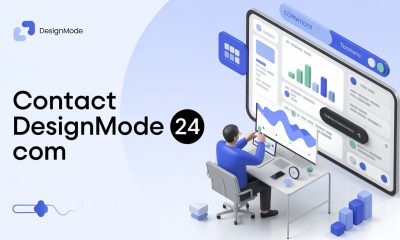Interview Tips/Tricks
The Common Challenges in Childcare Interviews
Mastering Childcare Interviews: Overcoming Challenges and Achieving Success

Are you preparing for a childcare interview and feeling overwhelmed? This guide will help you navigate common challenges and stand out as a strong candidate.
We’ll cover key areas like addressing behavioral questions, communicating your teaching philosophy, and handling practical assessments.
By the end, you’ll have practical insights to showcase your skills in child development, demonstrate your understanding of diverse parenting styles, and highlight your ability to give children the attention they need. Let’s boost your confidence and improve your chances of landing that childcare position.
Understanding Common Childcare Interview Questions

I’ll guide you through common childcare interview questions, covering experience with children, handling difficult situations, education and certifications, motivations for working in early childhood education, and availability. As a caregiver, understanding these topics will help you navigate interviews confidently, showcasing your skills in areas like managing tantrums and adhering to equal opportunity policies.
Anticipating Questions About Your Experience With Children
When preparing for a childcare interview, I anticipate questions about my experience with children. I focus on showcasing my confidence and patience, key traits that help me build strong relationships with young learners. By highlighting specific examples of how I’ve handled challenging situations, I demonstrate my ability to remain calm and creative in diverse childcare environments.
I’m ready to discuss my experience working with different age groups and developmental stages. This allows me to emphasize my understanding of child development concepts and my ability to adapt my approach to meet each child’s unique needs. I also prepare to explain how I incorporate creativity into daily activities, fostering a stimulating learning environment.
It’s crucial to be prepared to address questions about handling discrimination or special needs in a childcare setting. I emphasize my commitment to creating an inclusive environment where all children feel valued and supported. Here are some key points I cover when discussing my experience with children:
Are you ready for the interview?
Practice interview questions in a real interview-style setting.
- Specific age groups I’ve worked with
- Types of childcare settings (e.g., daycare, preschool, home-based care)
- Memorable experiences or challenges I’ve overcome
- Methods for promoting child development and learning
- Strategies for maintaining a safe and nurturing environment
Preparing for Inquiries on Handling Difficult Situations
I prepare for questions about handling difficult situations by focusing on my problem-solving skills and ability to remain calm under pressure. I emphasize my certification in early childhood education, which equips me with strategies to manage challenging behaviors effectively. I’m ready to discuss how I use active listening techniques to understand children’s needs and address issues proactively.
When discussing difficult situations, I highlight my experience in creating a positive learning environment within budget constraints. I explain how I’ve successfully implemented behavior management techniques that promote positive interactions and minimize disruptions. I also share examples of how I’ve adapted activities to accommodate diverse learning styles and special needs.
I’m prepared to discuss specific scenarios, such as handling tantrums or conflicts between children. I emphasize my approach to these situations, which includes:
- Remaining calm and composed
- Assessing the situation quickly
- Using age-appropriate communication techniques
- Implementing consistent and fair consequences
- Collaborating with parents and colleagues for long-term solutions
Responding to Questions About Education and Certifications
During childcare interviews, I confidently discuss my education and certifications, emphasizing how they’ve shaped my teaching methods and enhanced my cultural sensitivity. I highlight my degree in early childhood education and any specialized training in infant care, demonstrating my commitment to professional growth and staying current with best practices in the field.
I prepare to explain how my educational background has equipped me with a strong foundation in child development theories and practical skills for engaging children in meaningful learning experiences. During the interview, I share specific examples of how I’ve applied my knowledge to create age-appropriate activities that promote holistic development, especially for infants and toddlers.
When discussing certifications, I focus on how they’ve improved my ability to handle diverse situations and foster inclusive environments. I emphasize my ongoing commitment to professional development, showcasing my readiness to adapt to new challenges and contribute positively to the childcare center’s mission.
Discussing Motivations for Working in Childcare
As a teacher, I’m driven by the opportunity to shape young minds and foster a love for learning. My motivation stems from observing children’s growth and development, which I find incredibly rewarding. I stay current with research in early childhood education to ensure I’m using the most effective teaching methods.
During recruitment interviews, I emphasize my passion for creating inclusive and stimulating environments that support each child’s unique needs. I share specific examples of how I’ve implemented creative activities that promote cognitive, social, and emotional development. This demonstrates my commitment to providing high-quality care and education.
Free ATS Resume Maker & Analyzer
Create a resume that passes ATS checks and impresses recruiters in seconds.
I also discuss how my motivation extends to collaborating with families and colleagues to create a supportive community. By conducting regular observations and assessments, I tailor my approach to each child’s progress, ensuring they receive the best possible care and education. This dedication to continuous improvement aligns with the goals of most childcare centers.
Answering Queries on Availability and Flexibility
As a preschool teacher, I approach questions about availability and flexibility with a clear strategy. I emphasize my commitment to maintaining consistent classroom management while being adaptable to the center’s needs. I explain how my philosophy of putting children first guides my willingness to adjust my schedule when necessary.
When discussing availability, I highlight my reliability and punctuality, crucial traits for effective discipline in a childcare setting. I share examples of how I’ve successfully balanced work commitments with personal responsibilities, demonstrating my ability to maintain a stable presence in the classroom.
I also address how my flexibility extends to my teaching approach. I explain how I adapt my methods to meet individual children’s needs, showcasing my versatility as a preschool teacher. This includes being open to working with different age groups or taking on additional responsibilities when needed, always prioritizing the children’s well-being and educational experience.
Highlighting Relevant Skills and Qualifications

In childcare interviews, I highlight my skills and qualifications, focusing on experience with various age groups, communication abilities, and child development knowledge. I emphasize my organizational skills, teamwork, and ability to promote health and social skills. I demonstrate expertise in adapting to different learning styles and fostering community engagement through effective negotiation and planning.
Showcasing Experience With Different Age Groups
In childcare interviews, I showcase my experience with different age groups by highlighting my ability to adapt my teaching strategies to meet diverse developmental needs. I emphasize how I tailor activities and emotional support to suit infants, toddlers, and preschoolers, ensuring compliance with regulatory requirements for each age group. This demonstrates my versatility and understanding of child development stages.
I discuss specific examples of age-appropriate activities I’ve implemented, such as sensory play for infants and structured learning experiences for preschoolers. By aligning these examples with the job description, I illustrate how my experience directly translates to the position’s requirements. I also explain how I use positive reinforcement techniques tailored to each age group to promote desired behaviors and foster a supportive learning environment.
To further demonstrate my expertise, I share insights on how I adapt communication styles for different age groups, from nonverbal cues with infants to more complex language with preschoolers. I emphasize my commitment to ongoing professional development to stay current with best practices for each age group, ensuring I provide high-quality care that meets or exceeds regulatory standards. Here’s a summary of my experience with different age groups:
Emphasizing Communication and Interpersonal Abilities
I emphasize my strong communication skills by discussing how I effectively engage with children, parents, and colleagues to create a supportive learning environment. My ability to tailor my communication style to different age groups and developmental stages allows me to design and implement curriculum that meets each child’s unique needs. I highlight my expertise in creating clear, age-appropriate descriptions of activities and expectations, ensuring children understand and feel comfortable in the educational space.
As an education expert, I stress the importance of active listening and empathy in building strong relationships with children and families. I share examples of how I’ve used these skills to resolve conflicts, address concerns, and foster a positive atmosphere in the childcare setting. My interpersonal abilities enable me to collaborate effectively with colleagues, contributing to a cohesive team that provides high-quality care and education.
I demonstrate my commitment to ongoing professional development by discussing how I stay informed about the latest research and best practices in early childhood education. This knowledge enhances my ability to communicate effectively with parents about their child’s progress and needs. I explain how I use various communication methods, such as daily reports, parent–teacher conferences, and digital platforms, to keep families informed and involved in their child’s educational journey.
Demonstrating Knowledge of Child Development Theories
I demonstrate my knowledge of child development theories by explaining how I apply them in practical situations. For instance, I discuss how I use Piaget’s cognitive development theory to create age-appropriate activities for children in kindergarten. This showcases my understanding of how children learn and develop at different stages.
When discussing my approach to childcare, I emphasize the importance of soft skills alongside theoretical knowledge. I explain how I incorporate Vygotsky’s social development theory to foster collaborative learning environments. This demonstrates my ability to create supportive spaces where children can learn from their peers and adults.
I highlight my expertise in providing constructive feedback to parents about their child’s progress. By referencing Erikson’s psychosocial development theory, I show how I support children’s emotional growth and help parents understand their child’s developmental milestones. This approach underscores my commitment to holistic child development and parent engagement.
Presenting Organizational and Planning Skills
I showcase my organizational and planning skills in child care by describing how I create structured daily routines that promote learning and development. I emphasize my ability to balance planned activities with flexibility, demonstrating critical thinking in adapting to children’s changing needs. This approach ensures a smooth-running classroom while supporting each child’s understanding and growth.
During interviews, I highlight my proficiency in curriculum planning, explaining how I design age-appropriate activities that align with educational standards. I discuss my method of documenting children’s progress and using this information to inform future planning. This demonstrates my commitment to continuous improvement and my skill in tailoring experiences to individual developmental stages.
I also address how my organizational skills contribute to maintaining a safe and compliant child care environment. I explain my system for regular safety checks, supply management, and record-keeping, which are crucial for meeting regulatory requirements. By linking these skills to the potential employer’s needs, I show how I can add value to their program beyond basic care, justifying a competitive salary.
Illustrating Ability to Work in a Team Environment
I emphasize my ability to work in a team environment by highlighting my experience in building rapport with colleagues to create a cohesive learning environment. I share examples of how I’ve collaborated on curriculum development, ensuring a unified approach to children’s education. My commitment to open communication and mutual respect fosters a positive atmosphere where ideas flow freely.
In interviews, I discuss my role in mentorship programs, both as a mentor and mentee. This demonstrates my willingness to learn from others and share my knowledge, contributing to a culture of continuous improvement. I also highlight my first aid certification, explaining how it enhances our team’s ability to ensure children’s safety collectively.
I showcase my leadership skills by describing situations where I’ve taken initiative in team projects or led staff training sessions. These experiences illustrate my ability to motivate and inspire colleagues, contributing to a more effective and harmonious work environment. I emphasize how my teamwork skills directly benefit the children in our care, creating a stable and nurturing atmosphere.
Addressing Behavioral and Scenario-Based Questions

I tackle behavioral and scenario-based questions in childcare interviews by drawing on my experience and insights. I explain conflict resolution strategies, discuss stress management techniques, and share positive discipline examples. I outline my approach to child safety and fostering inclusive environments, addressing each question with clear organization and practical solutions to showcase my expertise and overcome potential biases.
Explaining Strategies for Conflict Resolution Among Children
As an early childhood educator, I employ effective strategies for conflict resolution among children, focusing on promoting language development and reducing stress. I encourage children to express their feelings verbally, guiding them to use “I” statements and teaching them to listen actively to their peers. This approach not only resolves conflicts but also enhances their communication skills.
I incorporate physical activity as a stress-relief technique, especially for younger children who may struggle to articulate their emotions. By integrating movement breaks or outdoor play, I help children release tension and return to conflicts with a calmer mindset. This strategy is particularly effective in nanny settings where I have more flexibility to adjust activities based on children’s needs.
To foster long-term conflict resolution skills, I use role-playing scenarios and social stories. These techniques allow children to practice problem-solving in a safe environment, building their confidence and empathy. I also involve parents in this process, sharing strategies they can use at home to reinforce positive conflict resolution habits. Here’s a summary of my approach:
Describing Methods for Managing Stressful Situations
In job interviews, I emphasize my strategies for managing stressful situations in childcare settings. I prioritize maintaining a calm demeanor and implementing effective behavior management techniques to ensure children’s safety and well-being. By focusing on clear communication and establishing consistent routines, I create a stable environment that reduces stress for both children and staff.
I highlight my ability to adapt literacy activities to suit different learning styles, which helps prevent frustration and potential behavioral issues. During stressful moments, I use patience and positive reinforcement to guide children through challenging tasks. This approach not only manages immediate stress but also builds children’s resilience and problem-solving skills.
To demonstrate my expertise in stress management, I share specific examples of how I’ve handled high-pressure situations in previous roles. I explain my method for assessing and prioritizing tasks during busy periods, ensuring that safety protocols are always followed. My proactive approach includes:
- Implementing regular stress-relief activities for children
- Maintaining open communication with parents and colleagues
- Utilizing age-appropriate conflict resolution techniques
- Conducting regular safety checks to prevent potential stressors
- Practicing self-care to maintain my own stress levels and patience
Sharing Examples of Positive Discipline Techniques
I emphasize positive feedback as a cornerstone of my discipline approach in childcare programs. By acknowledging good behavior and effort, I encourage children to develop problem-solving skills and self-regulation. This technique not only reinforces desired actions but also builds children’s confidence and motivation to continue making positive choices.
In my experience, creating an accessible environment where children feel safe to express themselves is crucial for effective discipline. I establish clear, age-appropriate expectations and consistently model respectful behavior. During emergencies or challenging situations, I remain calm and guide children through the problem-solving process, helping them learn from their experiences.
I incorporate natural consequences into my discipline strategy, allowing children to understand the impact of their actions. For instance, if a child refuses to wear a coat outside, I let them experience the cold briefly (while ensuring their safety) before offering the coat again. This approach promotes critical thinking and personal responsibility, essential skills for their development.
Outlining Steps for Ensuring Child Safety
In childcare interviews, I emphasize my commitment to child safety by outlining my comprehensive approach to regulation compliance. I explain how I conduct regular safety checks, maintain proper staff-to-child ratios, and ensure all equipment meets safety standards. My philosophy of education incorporates safety as a fundamental element, fostering an environment where children can explore and learn securely.
I discuss my proactive strategies for preventing accidents and managing emergencies. This includes my expertise in first aid and CPR, as well as my ability to quickly assess and respond to potential hazards. I highlight how I integrate safety education into daily activities, teaching children age-appropriate skills to recognize and avoid dangers, which also nurtures their natural curiosity in a safe manner.
To demonstrate my commitment to continuous improvement in child safety, I share examples of how I stay updated on the latest safety regulations and best practices in early childhood education. I explain my approach to conflict resolution among children, emphasizing non-violent communication and problem-solving skills that contribute to a safer environment. Here’s a summary of my child safety approach:
Discussing Ways to Foster Inclusive Environments
I prioritize fostering inclusive environments through comprehensive training programs that address cultural sensitivity and diversity management. By equipping staff with the necessary information and skills, we create a welcoming atmosphere for children from all backgrounds. This approach enhances our ability to meet each child’s unique needs and promotes a sense of belonging for everyone in our care.
To ensure effective implementation, I regularly assess our inclusivity practices and gather feedback from families. This information guides our ongoing efforts to improve and adapt our inclusive strategies. I emphasize the importance of empathy in our daily interactions, encouraging staff to consider different perspectives and cultural norms when addressing children’s needs and communicating with families.
In my experience, celebrating diversity through age-appropriate activities and materials significantly enhances our inclusive culture. I incorporate books, toys, and learning materials that represent various cultures and family structures into our curriculum. This approach not only educates children about diversity but also helps them develop a positive self-image and respect for others, regardless of their background.
Communicating Teaching Philosophy and Style

In childcare interviews, I articulate my teaching philosophy by highlighting my experience-based approach to early childhood education. I discuss techniques for engaging children through language and storytelling, emphasizing the value of individualized learning plans. I share ideas for fostering creativity and exploration, and explain my methods for assessing child progress, showcasing the reason behind each strategy.
Articulating Approach to Early Childhood Education
I approach early childhood education by focusing on creating a nurturing environment that supports holistic development. My teaching philosophy emphasizes hands-on learning experiences that engage children’s natural curiosity and foster critical thinking skills. I believe in providing a balance of structured activities and free play to promote cognitive, social, and emotional growth.
In my classroom, I implement developmentally appropriate practices that cater to each child’s individual needs and learning styles. I use a variety of teaching methods, including play-based learning, inquiry-based activities, and small group instruction, to ensure every child has the opportunity to thrive. My approach also includes regular assessments to track progress and adjust teaching strategies as needed.
I prioritize building strong relationships with children and their families, recognizing the importance of collaboration in a child’s educational journey. By maintaining open communication and involving parents in their child’s learning process, I create a supportive community that enhances the overall educational experience. This partnership approach allows me to address each child’s unique needs effectively and provide consistent support both at school and at home.
Describing Techniques for Engaging Children in Learning
I engage children in learning by creating interactive and hands-on experiences that cater to various learning styles. By incorporating sensory activities, visual aids, and movement-based exercises, I ensure that every child has the opportunity to connect with the material in a way that resonates with them. This approach not only keeps children interested but also helps them retain information more effectively.
To foster a love for learning, I use storytelling and role-play techniques that make abstract concepts more tangible and relatable. By weaving educational content into engaging narratives, I capture children’s imagination and encourage them to explore ideas further. This method also supports language development and social skills as children participate in collaborative storytelling activities.
I implement technology in age-appropriate ways to enhance learning experiences. Using interactive whiteboards, educational apps, and digital storytelling tools, I create dynamic lessons that appeal to tech-savvy children while still maintaining a balance with traditional learning methods. This blended approach prepares children for the digital world while ensuring they develop essential hands-on skills.
Outlining Plans for Supporting Individual Learning Needs
I support individual learning needs by implementing personalized learning plans for each child in my care. By conducting regular assessments and observations, I identify each child’s strengths, challenges, and interests, allowing me to tailor my teaching approach accordingly. This individualized strategy ensures that every child receives the support they need to thrive and progress at their own pace.
To accommodate diverse learning styles, I incorporate a variety of teaching methods and materials into my daily activities. I use visual aids, hands-on experiences, and auditory techniques to cater to different preferences and abilities. By offering multiple ways to engage with the curriculum, I create an inclusive environment where every child can access and understand the material effectively.
I collaborate closely with parents and specialists to address specific learning needs or challenges. Regular communication allows me to share progress updates and gather insights from home, ensuring a consistent approach across all environments. When necessary, I adapt my classroom setup and routines to provide additional support, such as creating quiet spaces for children who need less stimulation or implementing visual schedules for those who benefit from structure.
Sharing Ideas for Encouraging Creativity and Exploration
I encourage creativity and exploration in my childcare setting by providing open-ended materials and activities that stimulate imagination. I set up inviting learning centers with art supplies, building blocks, and natural objects, allowing children to experiment freely. This approach fosters problem-solving skills and helps children develop their unique ideas.
To promote exploration, I incorporate inquiry-based learning into our daily routine. I pose thought-provoking questions and encourage children to investigate their surroundings. By supporting their curiosity, I help them develop critical thinking skills and a love for learning. I also plan regular outdoor experiences, allowing children to connect with nature and explore their environment safely.
I cultivate a classroom culture that values creative expression and risk-taking. I celebrate each child’s unique contributions and encourage peer appreciation. This positive atmosphere boosts confidence and motivates children to express themselves freely. Here’s how I structure our creative exploration activities:
Explaining Methods for Assessing Child Progress
I assess child progress through a combination of observation, documentation, and developmental checklists. By regularly observing children during play and structured activities, I gain insights into their growth across various domains. I document these observations using anecdotal notes and photos, which help me track individual progress over time.
To ensure comprehensive assessments, I utilize standardized developmental checklists tailored to specific age groups. These tools allow me to measure each child’s progress against established milestones in areas such as cognitive, social-emotional, and physical development. I conduct these assessments periodically throughout the year to identify areas of strength and potential need for additional support.
I believe in involving families in the assessment process. I share progress reports with parents during regular conferences and encourage their input on their child’s development at home. This collaborative approach ensures a holistic view of each child’s growth and allows for aligned support between home and childcare environments. My assessment methods include:
- Daily observation and documentation
- Age-appropriate developmental checklists
- Portfolio creation showcasing children’s work
- Regular parent–teacher conferences
- Collaborative goal-setting with families
Questions About Parent Interactions

I approach parent interactions in childcare with professionalism and empathy. I’ll discuss strategies for building trust, communicating progress, addressing concerns, collaborating on goals, and handling confidential information. These skills are crucial for fostering positive relationships with families and ensuring children’s well-being and development in the childcare setting.
Discussing Strategies for Building Trust With Families
I build trust with families by prioritizing open and consistent communication from the start. During initial meetings, I take time to listen to parents’ concerns, goals, and expectations for their child’s care. This approach demonstrates my commitment to understanding each family’s unique needs and lays the foundation for a strong partnership.
To maintain trust, I provide daily updates on children’s activities, progress, and any notable events. I use a combination of face-to-face conversations, written reports, and secure digital platforms to ensure parents feel connected to their child’s experiences. This transparency helps alleviate concerns and reinforces my role as a reliable caregiver.
I also organize regular family engagement events, such as parent workshops or classroom observations. These opportunities allow parents to actively participate in their child’s learning environment and witness my teaching methods firsthand. By fostering this level of involvement, I strengthen the trust between myself and the families I serve.
Explaining How to Communicate Child’s Progress to Parents
I communicate children’s progress to parents through regular, structured updates that blend quantitative assessments with qualitative observations. I schedule formal parent–teacher conferences twice a year, providing comprehensive reports on each child’s development across key areas such as cognitive, social-emotional, and physical skills. These meetings offer an opportunity to discuss progress in-depth and collaborate on future learning goals.
To maintain ongoing communication, I use daily digital updates and weekly summary emails. These brief yet informative reports highlight significant achievements, areas for improvement, and upcoming learning objectives. I ensure these updates are personalized, focusing on each child’s unique journey and avoiding generic comments. This approach keeps parents consistently informed and engaged in their child’s growth.
I also create individualized portfolios for each child, showcasing their work, photos of activities, and milestone achievements. During pick-up times, I often share these portfolios with parents, providing tangible evidence of their child’s progress. This visual representation of growth not only informs parents but also celebrates each child’s unique accomplishments. Here’s an overview of my communication methods:
Addressing Concerns in a Professional Manner
I address parental concerns professionally by actively listening and validating their feelings. When a parent raises an issue, I give them my full attention, maintaining eye contact and using nonverbal cues to show I’m engaged. This approach helps build trust and demonstrates my commitment to resolving their concerns.
I respond to concerns with empathy and clarity, offering specific solutions or action plans. I explain my reasoning behind decisions or practices, ensuring parents understand the educational or developmental benefits for their child. If necessary, I involve other staff members or supervisors to provide a comprehensive response.
I follow up with parents after addressing their concerns, checking if they’re satisfied with the resolution. This proactive approach shows my dedication to ongoing communication and partnership. I also use feedback from these interactions to improve our childcare practices, demonstrating a commitment to continuous improvement.
Collaborating With Parents on Child Development Goals
I collaborate with parents on child development goals by establishing open communication channels from the start. During initial meetings, I discuss each child’s current developmental stage and work with parents to set realistic, achievable goals. This partnership approach ensures that we’re aligned in supporting the child’s growth both at home and in the childcare setting.
To maintain consistency, I regularly update parents on their child’s progress towards these goals. I use a combination of weekly progress reports and monthly in-person meetings to share observations and discuss any adjustments needed. This frequent communication allows us to celebrate milestones together and address any challenges promptly.
I also provide parents with strategies and activities they can implement at home to reinforce our developmental goals. By offering practical suggestions tailored to each family’s routine, I empower parents to actively participate in their child’s learning journey. This collaborative approach strengthens our partnership and maximizes the child’s potential for growth across all environments.
Handling Confidential Information Respectfully
I handle confidential information in childcare settings with utmost respect and professionalism. I ensure all sensitive data, including children’s personal details and family information, is stored securely in locked cabinets or password-protected digital systems. I strictly adhere to privacy regulations and only share information on a need-to-know basis with authorized personnel.
When discussing sensitive matters with parents, I always choose a private location away from other families and staff. I maintain a calm and neutral tone, focusing on facts rather than personal opinions. This approach helps build trust and demonstrates my commitment to protecting the privacy of each family I work with.
I regularly review and update our confidentiality policies to ensure they meet current standards. I also provide training to all staff members on the importance of confidentiality and the proper handling of sensitive information. By fostering a culture of respect for privacy, I create a safe and trustworthy environment for all families in our care.
Preparing for Practical Assessments During the Interview

I’ll guide you through preparing for practical assessments in childcare interviews. I’ll cover demonstrating techniques in real-time, engaging with children present, showcasing problem-solving skills through role-play, participating in group activities, and reflecting on performance. These tips will help you confidently navigate hands-on evaluations and showcase your childcare expertise.
Demonstrating Childcare Techniques in Real-Time
I prepare for real-time demonstrations by practicing key childcare techniques regularly. Before interviews, I review common scenarios and refresh my skills in areas like diaper changing, feeding, and age-appropriate play. This preparation allows me to showcase my abilities confidently and naturally during practical assessments.
During the demonstration, I narrate my actions clearly, explaining the reasoning behind each step. I focus on maintaining a calm and nurturing demeanor while efficiently completing tasks. By demonstrating proper hygiene practices and safety measures, I highlight my commitment to creating a secure environment for children.
I adapt my approach based on the age group specified in the assessment. For infants, I emphasize gentle handling and soothing techniques. With toddlers, I showcase engagement strategies and positive behavior management. This flexibility demonstrates my versatility and understanding of developmental stages in childcare.
Engaging With Children Present During the Interview
When engaging with children during interviews, I focus on creating a warm and inviting atmosphere. I greet each child at eye level, using a friendly tone and open body language to help them feel comfortable. This approach allows me to quickly build rapport and assess the child’s temperament and communication style.
I adapt my interaction style based on the child’s age and developmental stage. For younger children, I use simple language and incorporate playful elements to maintain their interest. With older children, I engage in more complex conversations, asking open-ended questions to encourage their participation and showcase my ability to foster cognitive development.
Throughout the interaction, I demonstrate my classroom management skills by setting clear expectations and using positive reinforcement. I remain attentive to all children present, ensuring each feels included and valued. This multitasking ability highlights my capacity to manage a diverse group of children effectively, a crucial skill in childcare settings.
Showcasing Problem-Solving Skills Through Role-Play
During role-play scenarios in childcare interviews, I focus on demonstrating my ability to think quickly and creatively. I approach each situation with a calm demeanor, carefully assessing the presented challenge before proposing a solution. This showcases my capacity to remain composed under pressure while applying my knowledge of child development and behavior management techniques.
I make sure to explain my thought process as I work through the role-play, highlighting the rationale behind my chosen approach. By articulating my decision-making steps, I demonstrate my understanding of best practices in early childhood education and my ability to apply them in real-world situations. This verbal explanation also allows me to showcase my communication skills, which are crucial when interacting with children, parents, and colleagues.
In these scenarios, I emphasize my flexibility by offering multiple solutions when appropriate. This approach illustrates my adaptability and resourcefulness, key qualities in the dynamic environment of childcare. I also make a point to reflect on the outcome of the role-play, discussing what worked well and what I might do differently in the future, demonstrating my commitment to continuous improvement and professional growth.
Participating in Group Activities With Other Candidates
When participating in group activities during childcare interviews, I focus on demonstrating my teamwork and leadership skills. I actively engage in discussions, offering ideas while also listening to and building upon others’ suggestions. This approach showcases my ability to collaborate effectively, a crucial skill in childcare settings where cooperation with colleagues is essential.
I pay close attention to the dynamics of the group, ensuring I contribute meaningfully without dominating the conversation. By encouraging quieter participants and mediating any conflicts that arise, I demonstrate my interpersonal skills and ability to create a positive, inclusive environment. These qualities are particularly valuable in childcare, where fostering a supportive atmosphere is key to children’s development.
Throughout the activity, I remain focused on the task at hand while also observing how my actions might impact children in a real childcare setting. I make a point to incorporate child-centric language and age-appropriate considerations into our group discussions, showcasing my understanding of early childhood education principles. This approach highlights my ability to balance practical tasks with the overarching goal of providing quality care and education to children. Here’s an overview of my strategy for group activities:
Reflecting on Performance After Practical Tasks
After completing practical tasks in childcare interviews, I take time to reflect on my performance critically. I review each activity, considering what went well and where I could improve. This self-assessment helps me identify areas for growth and demonstrates my commitment to continuous professional development in early childhood education.
I often ask for feedback from the interviewers or other participants, valuing their perspectives on my interactions and techniques. By actively seeking input, I show my openness to constructive criticism and my desire to enhance my skills. This approach also allows me to gain insights into the specific expectations of the childcare center, helping me align my practices with their standards.
During reflection, I consider how I can apply what I’ve learned to real-world childcare scenarios. I think about how my performance in these tasks relates to daily interactions with children, parents, and colleagues. By making these connections, I demonstrate my ability to translate interview experiences into practical improvements in my childcare practice, showcasing my adaptability and dedication to providing high-quality care.
Conclusion
Navigating common challenges in childcare interviews is crucial for showcasing your expertise and securing a position in this vital field. By preparing thoughtful responses to questions about experience, handling difficult situations, and interacting with parents, you demonstrate your readiness to provide high-quality care and education to children. Practical assessments during interviews offer opportunities to display your skills in real-time, emphasizing the importance of hands-on preparation and the ability to think on your feet. Ultimately, mastering these interview challenges not only increases your chances of landing the job but also reinforces your commitment to professional growth and excellence in early childhood education.
-

 Useful Tools2 months ago
Useful Tools2 months agoMovierulz 2024: Risks, Reality & Safer Alternatives
-

 Interview Preps8 months ago
Interview Preps8 months agoWhy Should We Hire You As A Teacher? Practical Answers
-

 Interview Preps8 months ago
Interview Preps8 months agoTop 35 Must Know Greggs Interview Questions & Expert Answers!
-

 Interview Preps6 months ago
Interview Preps6 months agoThe Most Common Questions For Aldi Video Interview
-

 Interview Preps2 years ago
Interview Preps2 years agoWhat Are Competency Based Questions? The Ultimate Guide


















































































































































